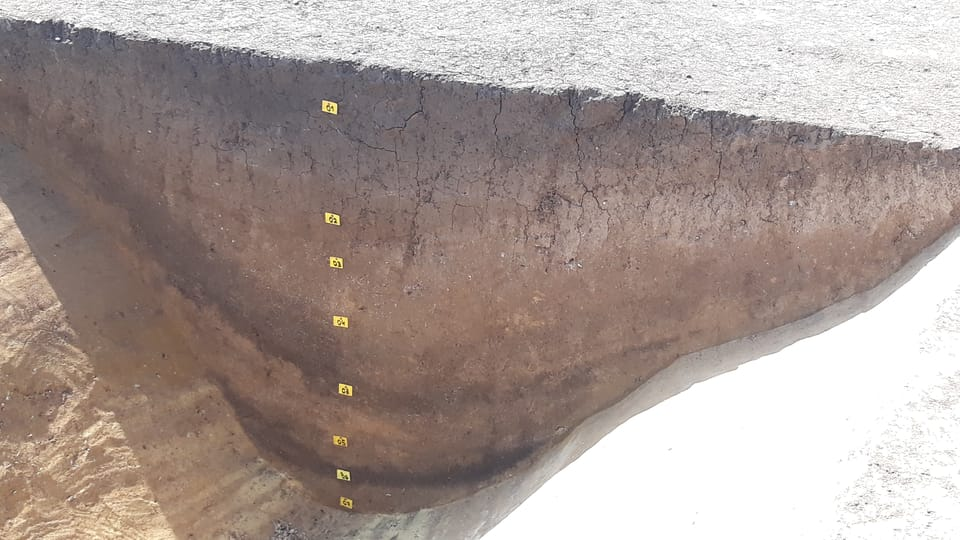Archaeologists in Prague uncover the ancient 7000-year-old neolithic structure
Archaeologists in Prague are currently uncovering a monumental building from the Stone Age. The so-called roundel, built around 7,000 years ago, is located in the district of Vinoř on the outskirts of the city.
Experts are hoping that the research will reveal more information about these mysterious ancient structures.
Roundels are large circular structures from the Neolithic period, that were constructed between 4600–4900 BC. That makes them the oldest monumental buildings in Europe, far older than the Egyptian pyramids or England’s Stonehenge.
One such roundel is currently being examined in Prague’s district of Vinoř. So far, research has shown that the structure is exceptionally well-preserved. Archaeologists were surprised to discover intact remains of the palisade troughs into which the central wooden structure was originally embedded.
Despite these findings, it is still unclear what purpose these structures have served, says Miroslav Kraus, who is in charge of the research:
“One such theory is that it could have been used as an economic centre, a centre of trade. It could also have been a centre of some religious cult, where rites of passage or rituals connected to the time of year were performed.
“Roundels were built during the Stone Age when people had not yet discovered iron. The only tools they could use were made of stone and animal bones.”
To date, around 200 roundels have been found all over central Europe, with 35 of them located on the territory of the Czech Republic. The roundel in Vinoř, which measures 55 metres in diameter, has an unusual floor plan with three separate entrances.
What makes its research unique is that archaeologists have uncovered the structure almost in its entirety, says Mr. Kraus:
“We have the opportunity to uncover nearly the whole structure, or rather what remained of it. At the same time, I should note that part of the structure was revealed back in the 1980s, during the laying of gas and water pipelines.”

Thanks to the extent of the research, archaeologists will be able to take samples for dating and analyses from various parts of the original structure, says Mr. Kraus.
The so-called roundel, built around 7,000 years ago, is located in the district of Vinoř on the outskirts of Prague|Photo: Archaeological Institute of the Academy of Sciences
“It would be great to discover something that would indicate the actual function of the building. However, it is very unlikely, since none of the previously researched roundels had revealed such information.
“It would also be great to find something that would suggest its real age. So far, radiocarbon dating of samples collected from roundels has put their age somewhere between 4900 years to 4600 BC. That is a pretty wide time span.”
The research of the Vinoř roundel is due to carry on until the end of September. Archaeologists have previously discovered a Neolithic settlement northeast of the roundel that had been used for 300 to 400 years.






